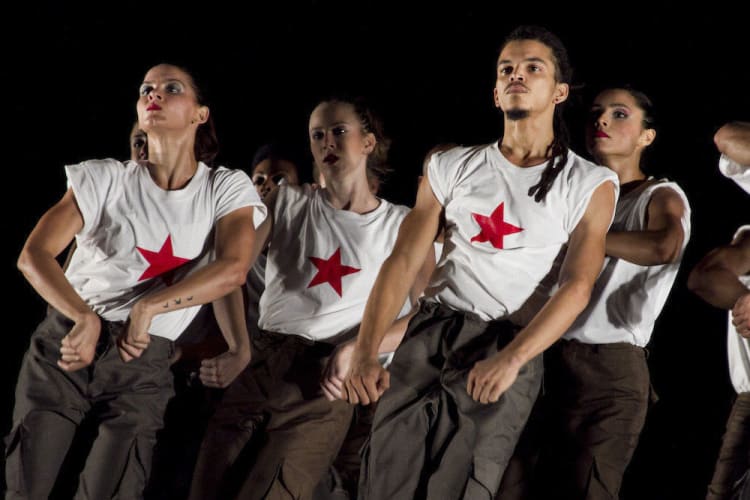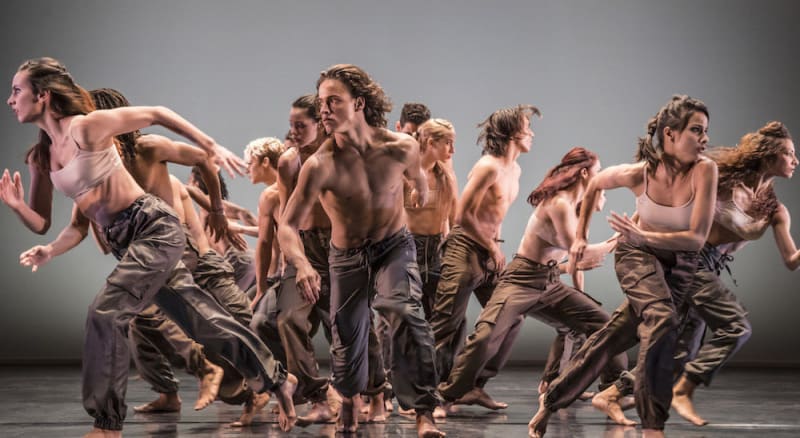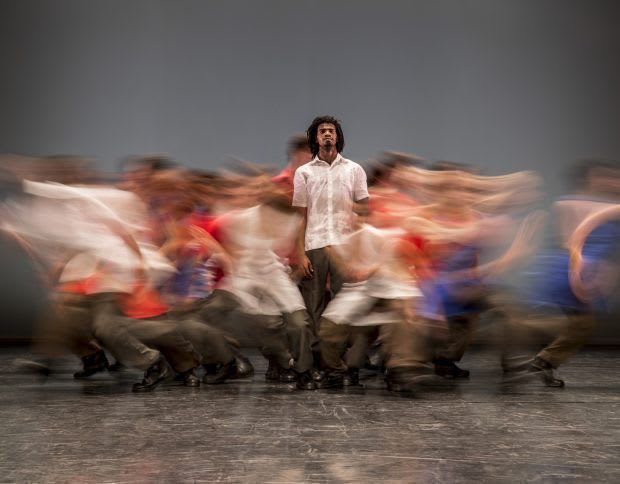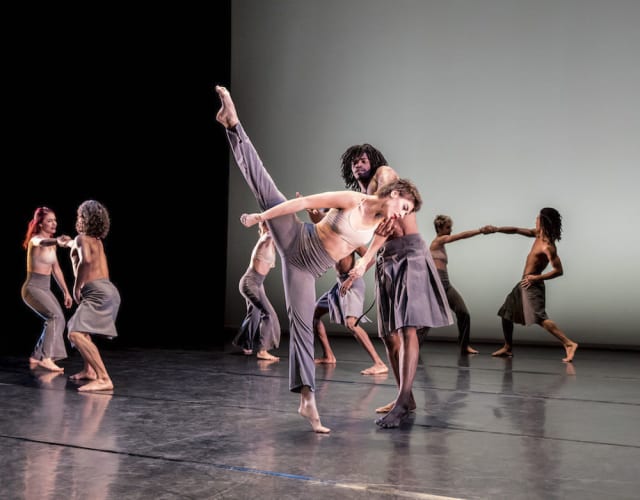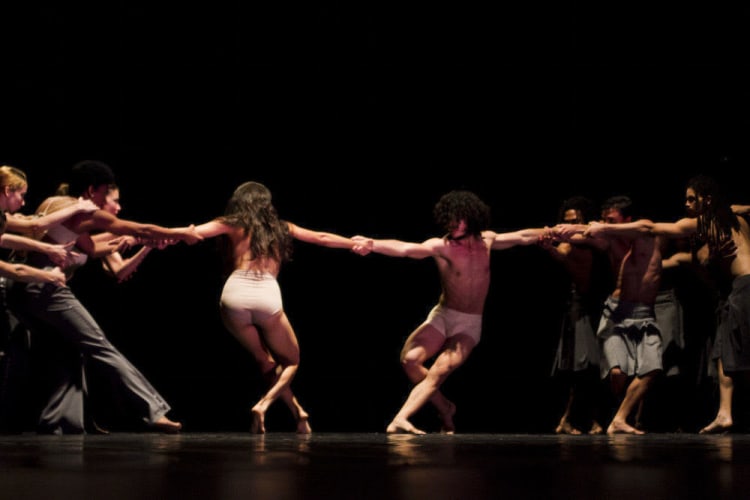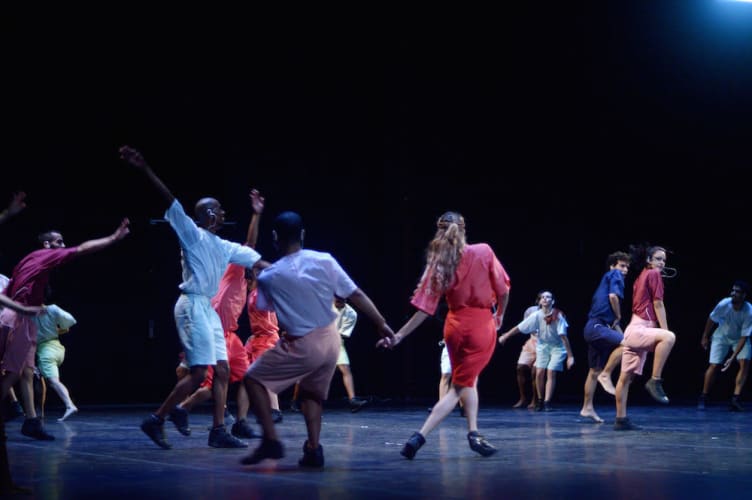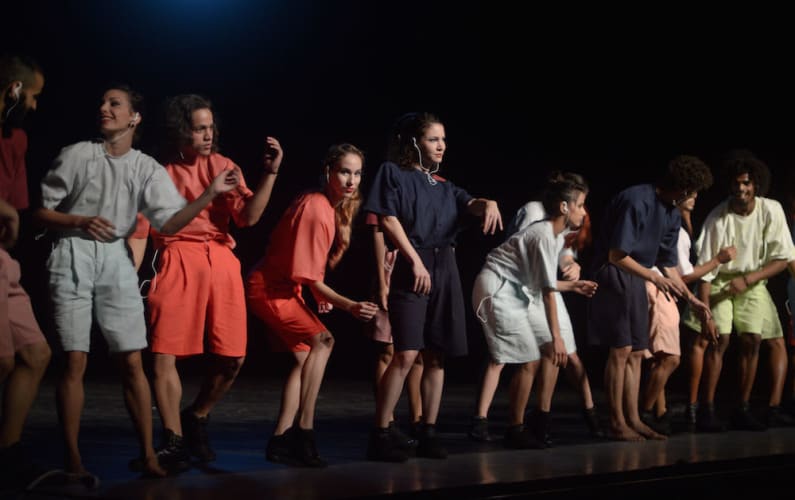The show starts at eight pm—why—because Danza Contemporánea de Cuba has just travelled down this very day from Newcastle, where they performed for two previous nights in a row. These young Cuban contemporary dancers, twenty-five all told, must be running on pure adrenalin.
On the day of Storm Doris, they dance up a storm of their own: knockout performances in three challenging contemporary pieces, to which they bring youthful punch, warmth and unflagging commitment.
The girls wear the trousers and the men skirts in the first number, Annabelle Lopez Ochoa’s twenty-seven-minute Reversible, a duel of the sexes, a rite of passage to sexual maturity, the creation myth, Adam and Eve. It leaves me wanting more.
The beautiful sensuality of strong handsome young bodies and pounding music driving that raw power: a couple, almost totally naked, encircled by their peers, handled, pulled apart and finally left to dance their mating duet. Primitive forces and loss of innocence.
Groups form into cohorts, stamp and threaten. The women, top dogs, eye the men—dance hall seduction in reverse. A couple come together, drop their respective trousers and skirt, try to swop them, but the guy can’t get the trousers on, and chucks them, who needs them anyway…
Outer clothes off, music thrumming to the beat of the heart, bodies, joined at the hip, spar, agile and lithe. Music weaves its magic spell; bodies swerve and curve, back flip and lick the floor. Serpent seductresses; cartwheeling, reeling boys trapped in their come-hither gaze. The primal urge, the pull of nature, the grace and eloquence of the human form—eighteen stand together, unisex in black pants, gender fluid.
Theo Clinkard’s conceptual middle number, half-hour-long The Listening Room, brings the temperature down. Think silent disco or flash mob mobile clubbing or headphone concert—not a new concept, but Clinkard takes it to a new level. He mixes it with Steve Reich’s Variations for vibes, piano and strings.
One minute we’re watching twenty young people in colour-coded long shorts and t-shirts random dancing, iPods plugged into ears, some with eyes closed, the next Reich’s music changes our perceptions. The same moves look different. John Cagean silences sharpen our eyes.
Now and then, dancers come forward, try to be inclusive, get a high five from the front row, grin and peel off into their own realm. Whatever they do, they are fabulous to watch, as they throw shapes, hunch and stoop, freeze poses. Some dance solos, some hook up with others. Headspace triggers, free form improvisation, and Pina Bauschian synchronicities determine the dynamic.
George Céspedes, first dancer and company choreographer, puts twenty-four dancers through their paces in Matria Etnocentra. He manoeuvres them - in combat trousers and white vests with red star on front and green star on the back - like a sergeant major into thrilling constructivist formations.
Imagine thirty-eight minutes of drill and its variations. Sounds tedious? Far, far from it! It is mesmerizing. Is it a salute to the motherland, or a satirical comment? The group looks convincingly patriotic, hands held to chests. On and on they stamp—Irish dancing, quadrilles and barn dances come sacrilegiously to mind, as hands slap raised knees, but I’m way off.
Music booms and clashes, feet hit the floor, this is square bashing to beat all bashing, electrifying in its patterns and rhythms, dramatic in its complex simplicity. Conformity gives way to head shakes, hand flutters, body shimmies—then back to military drill and commando crawl.
Sentries stand guard as dancers let fly in fast and furious solos, duets and ensemble. Precision clockwork, each component setting off the next, the machinery grows, multiplies in aerobic contact. The outer world breaks in, television, radio noises, civvy street, bright civvy clothes in red white and blue, the colours of the Cuban flag, an inner life and a love story.
Still a tightly-knit group, the dance becomes circular—fast spinning country dances—still stomping, faster and faster they fly. Incredible stamina—what a stupendous export, their country must be proud of them. The stage fills with couples dancing. A man stands still in their swirling midst—what is going on in his head?
Founded in 1959, Danza Contemporánea de Cuba is the nation’s flagship contemporary dance troupe, though recently Carlos Acosta’s company has enticed a few away. In the UK for a month (14 February to 18 March) London gets them for one night only, which is a big pity, for they are a must see. People in Cardiff, Plymouth, Brighton, Inverness, Edinburgh and Canterbury get booking now.
